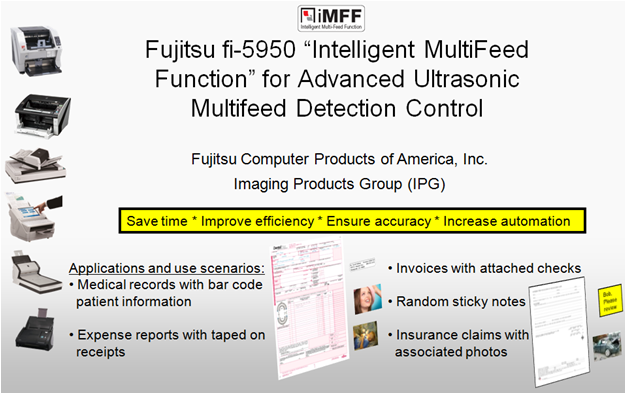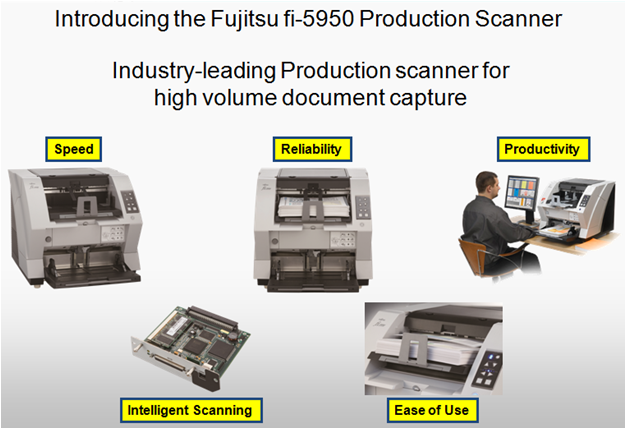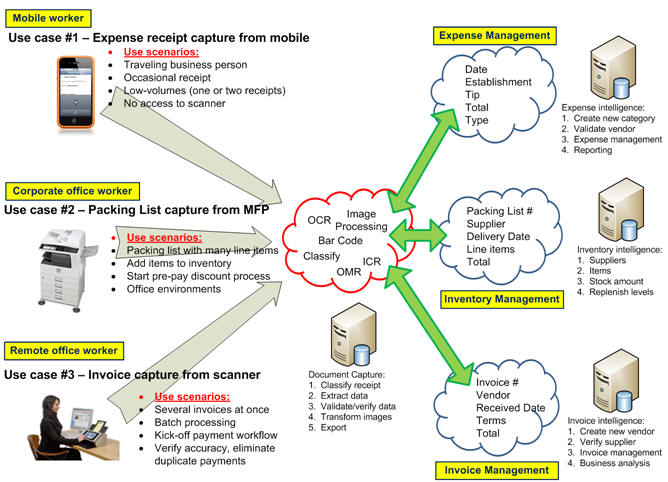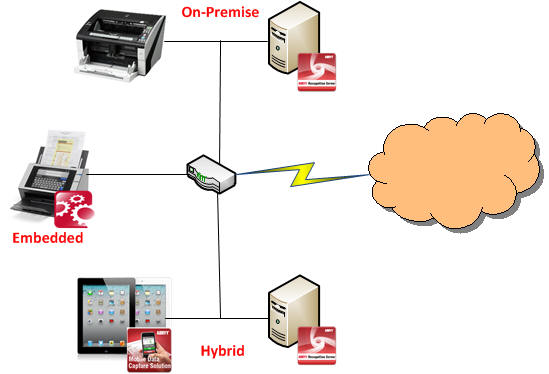This is a presentation about some of the important decisions and concepts to consider when implementing a document capture solution for Medical Forms Processing. Topics include form design best practices, new form types used for Medical Forms Processing and getting the most out of your document scanner generic levitra 20mg.
Category Archives: Imaging
Fujitsu fi-5950 Production Document Scanner and Intelligent MultiFeed Function (iMFF)
Intelligent MultiFeed Function (iMFF) is the most versatile way to configure the three Ultrasonic multifeed detection sensors. This functionality allows operators to configure sensors to intelligently ignore intentionally overlapping items such as taped on receipts, sticky notes or glued photos where these would normally be detected as a double-feed and stop the scanner.
Fujitsu fi-5950 Production Scanner with Intelligent MultiFeed Function (iMFF) (Flash animation)
Fujitsu fi-5950 Production Scanner with Intelligent MultiFeed Function (iMFF) (PDF animation)
Fujitsu fi-5950 Production Document Scanner Intelligent MultiFeed Function (iMFF) (PowerPoint download)
Building an effective capture solution – Part 3 of 3 (Storage/Business Policy/Workflow)
Building an effective capture solution – Part 3 of 3 (Storage/Business Policy/Workflow)
The real value of capture is realized when the information extracted from images is used within a business process whether this information is used, for example, to kick-off an approval process for expense reports, or this information is a Social Security Number used to retrieve your medical records. The ‘index values’, ‘metadata’, or ‘tags’ (whatever) you would like to call these extracted keywords help create the workflow that helps make processes more efficient. After all, an image itself without recognized characters, numbers or words is useless to a computer for knowledge of what information is contained on the document. It’s the information on the document that is of most importance, not just the image.
These days there are many great storage options for images and metadata captured but not all are created equal. Below are a few considerations for storage as it directly relates to document capture.
Storage considerations for document capture applications:
- Does your storage, and image viewer, support well known document formats such as TIFF, PDF, PJEG, DOC, XLS and others as well as emerging formats such as PDF/A or XML? A universal viewer that supports a wide range of formats is preferable because you never know how requirements might change in the future. Also, you might want to consider a viewer that allows for annotation, or markup, of images with items such as sticky notes, highlighting or shapes if your process requirements dictate these needs.
- The capture process is all about extracting metadata from images so, therefore, does your storage provide a metadata framework in which you can store this information to enhance search and retrieval? Basically this means does the storage provider offer a method to map captured index fields to database storage fields.
- Security. Of course security should be a major concern if your information is not intended for public consumption. While it’s an important issue, in general, if you ensure three simple features of your solution then you will address 80% of potential problems: (1) Secure disk-wiping of temporarily image files, (2) Encrypt data in motion and (3) Encrypt data at rest. Of course these are not the only three items to consider but start with these and research other security techniques based on the sensitivity of your information.
 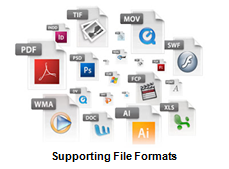 |
 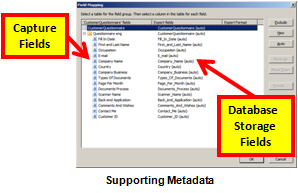 |
 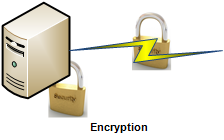 |
Now that we have covered two of three basic components of ‘Building an effective capture solution’ which included User Experience and Processing and having just outlined some Storage considerations, we should focus on the main theme of these posts and this is the point that ‘Capture begins with process‘. In other words, and as I stated in the prelude to this series of blog posts, before considering all the technology and architectural options you should careful consider the business process or process workflow first. Capture does not begin with a scan of a paper or picture of an image from a smart phone, it begins with process.
Below are a few considerations of business applications providers as it relates to document capture specifically:
Business rule considerations for capture:
- Data Type constraints. If the field is a ‘Date’ field then restrict the data in this field to only date values. Or if the field is a ‘Social Security Number’ or ‘Phone Number’, then, naturally, allow only number instead of letters. Conversely, if the field is a ‘Name’ field then the data type should only allow for letters instead of numbers.
- One of the greatest ways to ensure business continuity, as well as reduce errors in your document capture solution, is to perform database validation. In other words, when a particular piece of information, such as a Phone Number, is extracted from a document then a database lookup is executed to match that the Address field corresponds with the Phone Number field. If it doesn’t, or there are multiple matches, then the capture workflow can automatically send the information to a validation station where a human will verify the correct data. This helps to achieve the highest level of accuracy.
- Handling exceptions is a critical, yet often overlooked part of the overall capture strategy. We all hope our system works 100 percent perfect but this is just not reality for many reasons. After all, there are a lot of moving parts in these types of solutions: People, process, hardware, software, client, server, etc. Be prepared, and actually expect the fact that ‘things’ will happen. Try and define the possibilities. For example, if you are automatically classifying documents, expect that the system will have unrecognized documents and be prepared to send those to an exception queue for manual classification. Consequently this is also a great opportunity to ‘tune’ the system by adding a classification technique to recognize this document type in the future. It’s an opportunity to create a process to improve the system accuracy over time from an activity that might have been perceived as a negative had exceptions not been considered.
 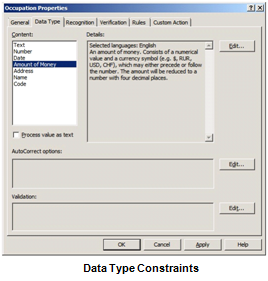 |
 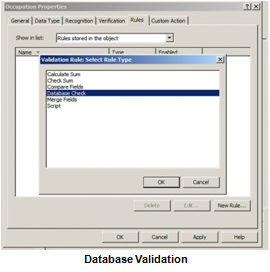 |
Now that we have discussed some of the high-level concepts of building an effective capture solution, I invite you to dig a bit deeper into specifics of each area of interest to you. We have many educational articles to supplement each of these three components of a solution including some of the following:
Building an effective capture solution:
Part 1 of 3 (User Experience/Device/Interface): Network scanning, mobile, multistream/color dropout
Part 2 of 3 (Capture/Processing/Transformation): High resolution scanning, forms processing, As a Service
Part 3 of 3 (Storage/Business Policy/Workflow): SharePoint, cloud computing, taxonomies/metadata
Finally, if I could leave you with one bit of advice, or wisdom, from my industry experience is that in order to build a highly effective capture solution you should reverse-engineer the solution starting from the process and, ultimately, the choice of device and other considerations should be fairly obvious. Not device to process. Start by defining the process then build accordingly. This will ensure the highest level of success, efficiency and high user adoption.
Building an effective capture solution – Part 2 of 3 (Capture/Processing/Transformation)
Building an effective capture solution – Part 2 of 3 (Capture/Processing/Transformation)
Implementing capture software technology these days offers many new opportunities that simply were not available just a few short years ago. Just like other ‘traditional’ on-premise software applications there are now many options to develop advanced technology, yet make the user experience extremely easy and efficient. In the first of this three part series of blog posts we focused on “(User Experience/Device/Interface)“ and how to properly select the most appropriate hardware capture device and also how to narrow user interface architecture based on the ‘User Experience’. The point-being was to carefully consider how the technology will be used to make decisions on devices and interface instead of forcing a technology to be used in situations that might be less than optimal for the users themselves.
Disruptive technologies offer great promise
The convergence of mega internet bandwidth, cheaper CPU’s, inexpensive memory, virtualization, web services, mobile, social and cloud (to name a few) allow innovative technology providers, as well as savvy systems integrators to create enterprise class capture solutions without compromise. Not only are these systems worthy of use within enterprise organizations but this advanced technology, typically previously available only to these large organizations, is now being made available to the masses in small and medium businesses with the Economies of scale: Cloud processing. Below is a high-level summary of three possible deployment methods for a capture solution:
Deployment methods for capture:
- On-premise deployment is the method which is most familiar. This simply means that the capture technology is connected to a capture device usually via a USB cable. The device could be a scanner, camera, fax machine or even image import.
- On device capture means that the software capture technology is embedded or part of the overall capture solution. Basically, the technology is ‘face-less’ and is integrated with some other software.
- Hybrid is an emerging capture deployment method which is quickly gaining popularity with the emergence of mobile and cloud computing. This method provides for maximum efficiency and typically the best performance. Hybrid is a system architecture that is constructed where each component performs some function in the process. Some of the interesting things that can be accomplished with a hybrid deployment method is that an application can, for example, take a picture of a document with a cell phone camera and perform image enhancement such as crop, deskew and auto-rotate on the phone itself. Then, on the server-side, perform the rest of the capture process such as classification, data extraction and export.
One of the next steps in building an effective capture solution is to decide if your organization will utilize off-the-shelf software, create something custom or use capture as a service. There are many decent off-the-shelf capture applications yet all will need some degree of configuration. This type of application usage is typically for smaller, less demanding types of requirements. When customization of a software application is desired, or required, then several capture software vendors offer Software Developer’s Kits, SDK’s or Software Engines. SDK’s are software tools that allow for software development so these are certainly not an out-of-the-box type solution but it does allow the flexibility to really customize the software application to meet specific organizational requirements. Last, but not least, is the “As a Service” option for document capture or conversion. This means that an organize would ‘rent’ or ‘lease’ these services from a provider. The ‘As a Service’ business model is similar to your internet service provider, cable/satellite TV provider or electricity to your home. You don’t own any of those services, rather you pay for the services they provide. Read more here: Economies of scale: Cloud processing. Your choice of usage model for capture should be rather obvious but only after requirements are clearly documented and market research is done to find out what products/services are available.
Types of capture application usage:
In summary, more than ever organizations are empowered to build highly effective capture solutions. With more available options this creates a vendor competitive environment which will help drive innovation, decrease prices to organizations and make advanced technology available to everyone. Legacy capture software vendors are being forced to innovate new products and services in order to remain relevant. With internet bandwidth being more and more stable as well as less expensive, it is bringing a new dimension to what, honestly, had become a somewhat stale industry. Then factor-in cloud applications which have enterprise class functionality available for organizations of all sizes to easily consume and you have a recipe to create Capture/Processing and Transformation to fit precise, not general, business requirements.
I invite you to re-visit the introductory post in this series of posts on “Building an effective capture solution” by reading this post on “Capture Begins with Process“. Or, I invite you to continue on by reading “Part 3 of 3 (Storage/Business Policy/Workflow)“.
 |
Building an effective capture solution – Part 1 of 3 (User Experience/Device/Interface)
Building an effective capture solution – Part 1 of 3 (User Experience/Device/Interface)
In this three part series of blog posts I would like to walk you through building a highly-effective, yet extremely agile and surprisingly affordable document capture solution. Not a piece-part of a solution, rather a complete solution from start-to-finish.
First, before any technology is ever considered the prudent thing to do is to clearly understand the use case for capture. In other words, think of real world scenarios and carefully consider the user experience of capturing information. The ultimate success, or failure, of the entire system can depend on whether users themselves feel comfortable with the capture experience. If the experience is not easy, available at all times or effective then regardless of how fancy the back-end technology is, they will surely resist.
Let me give some examples of use cases and how understanding the user experience first, before considering back-end technology, will help define the proper hardware device for capture:
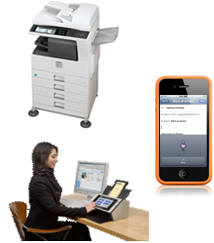  |
Use case will determine choice of capture hardware:
|
After you determine the proper hardware device based on user experience the next thing you must decide on is how information will be presented to users on the hardware device. Or, in other words, the User Interface. There are several options and whether you choose to design your own application or source an existing application a decision should be made wisely. The implications are tremendous, and in particular when it comes to system maintenance and scalability.
So, in summary, it’s critically important to take the user experience into account as an important first step in creating an effective capture solution. Also, making the important decision early-on in your capture system architecture about user interface considerations will enable you to achieve the goals of providing efficient, cost effective tools with the ability to scale-up, or down, when necessary.
I invite you to re-visit the introductory post in this series of posts on “Building an effective capture solution” by reading my post on “Capture Begins with Process“. Or, I invite you to continue on by reading “Part 2 of 3 (Capture/Processing/Transformation)“.

